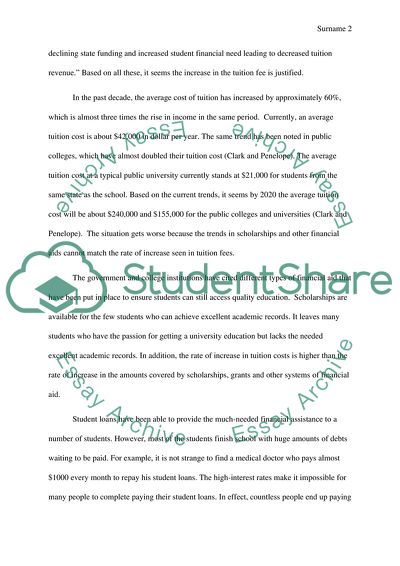Cite this document
(The Truth About the Crisis in Higher Education Finance Report Example | Topics and Well Written Essays - 1750 words, n.d.)
The Truth About the Crisis in Higher Education Finance Report Example | Topics and Well Written Essays - 1750 words. https://studentshare.org/education/1871883-arguing-a-position-as-the-increasing-of-the-university-tuition-is-university-still-worth-it
The Truth About the Crisis in Higher Education Finance Report Example | Topics and Well Written Essays - 1750 words. https://studentshare.org/education/1871883-arguing-a-position-as-the-increasing-of-the-university-tuition-is-university-still-worth-it
(The Truth About the Crisis in Higher Education Finance Report Example | Topics and Well Written Essays - 1750 Words)
The Truth About the Crisis in Higher Education Finance Report Example | Topics and Well Written Essays - 1750 Words. https://studentshare.org/education/1871883-arguing-a-position-as-the-increasing-of-the-university-tuition-is-university-still-worth-it.
The Truth About the Crisis in Higher Education Finance Report Example | Topics and Well Written Essays - 1750 Words. https://studentshare.org/education/1871883-arguing-a-position-as-the-increasing-of-the-university-tuition-is-university-still-worth-it.
“The Truth About the Crisis in Higher Education Finance Report Example | Topics and Well Written Essays - 1750 Words”. https://studentshare.org/education/1871883-arguing-a-position-as-the-increasing-of-the-university-tuition-is-university-still-worth-it.


